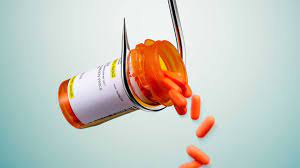Detoxification, commonly known as detox, is the process of ridding the body of harmful substances, including drugs and alcohol. It is often the first step on the path to recovery from addiction. While many individuals may contemplate at-home drug detox as a way to overcome their addiction, it’s essential to understand the potential dangers and the pressing need for professional care in this critical phase of recovery.
What is Detox?
Detox is removing toxic substances from the body, including drugs and alcohol. When someone uses drugs or alcohol consistently, their body becomes dependent on these substances. Detoxification is the body’s way of readjusting to functioning without these substances, which can be physically and mentally challenging.
Is At-Home Drug Detox Ever Safe?
While some individuals may attempt at-home drug detox with the best intentions, it is rarely a safe option. The safety of at-home detox largely depends on the type of substance, the severity of addiction, and the individual’s overall health. However, significant risks are involved in self-detoxification, and it is rarely recommended without professional guidance.
Is it Dangerous to Detox from Drugs at Home?
Yes, it can be extremely dangerous to detox from drugs at home. Detox can be associated with severe physical and psychological symptoms, which can be life-threatening in some cases. Attempting to detox at home can lead to complications and even fatalities, especially when dealing with substances like alcohol, benzodiazepines, or opioids.
Why Unsupervised Drug Withdrawal Is Dangerous?
Unsupervised drug withdrawal is inherently dangerous for several compelling reasons. First and foremost, it poses a significant risk of severe withdrawal symptoms, especially when dealing with substances like alcohol, opioids, or benzodiazepines. These symptoms can range from excruciating physical discomfort to intense psychological distress and, in some cases, can be life-threatening. Without the guidance of medical professionals, these symptoms may go unmanaged, potentially leading to dire consequences.
Moreover, unsupervised withdrawal from drugs can result in complications related to dehydration and nutritional deficiencies. The vomiting, diarrhea, and loss of appetite commonly experienced during detox can lead to severe dehydration and imbalances in essential electrolytes. If left untreated, these issues can pose serious health risks, further underlining the hazards of withdrawal alone.
Drug withdrawal can trigger severe mental health challenges, such as acute anxiety, depression, and even hallucinations in some instances. The absence of professional support makes it extremely difficult for individuals to cope with these emotional and psychological challenges effectively, potentially exacerbating their suffering.
What are the Risks of At-Home Drug Detox?
Detoxing from alcohol is thought to be less risky than detoxing from other drugs by many individuals. Here are several risks are associated with at-home drug detox:
Medical Complications: Without medical supervision, underlying health conditions may go unnoticed, and complications can arise during detox.
Dehydration and Electrolyte Imbalance: Vomiting and diarrhea can lead to severe dehydration and electrolyte imbalances, which can be life-threatening.
Seizures and Delirium: Certain drugs, like benzodiazepines, can lead to seizures and delirium during withdrawal, which require immediate medical attention.
Psychological Distress: Individuals may experience intense anxiety, depression, and hallucinations during drug detox, making coping challenging without professional help.
Relapse: The high risk of relapse without medical support can lead to a cycle of addiction, making recovery even more challenging.
How Does Detoxing from Drugs Work?
Detoxification, or detox, is the intricate process by which the body rids itself of harmful substances, including drugs and alcohol, and readjusts to functioning without them. This fundamental phase of addiction recovery involves several interconnected mechanisms. To initiate detox, individuals must cease drug or alcohol use, allowing the body to begin the healing process. The body’s detoxification primarily occurs in the liver, where toxins are metabolized and converted into less harmful compounds for excretion. As the substances are gradually eliminated, individuals often experience the manifestation of withdrawal symptoms, which can encompass a broad spectrum of physical and psychological effects. The intensity and duration of these symptoms vary widely based on factors like the specific substance, the time and intensity of prior use, and the individual’s overall health. Detox aims to reinstate the body’s physiological equilibrium by eliminating the influence of substances. It’s essential to recognize that while detox is a critical initial step, it’s just the start of the recovery process.
What are the Symptoms of Withdrawal in Detox?
The withdrawal symptoms during drug detox can vary depending on the substance and the individual’s history. Common withdrawal symptoms include:
Nausea and Vomiting: Many people undergoing detox experience nausea and may vomit as the body attempts to eliminate the remnants of the substance.
Diarrhea: Digestive disturbances are common, leading to frequent and often severe bouts of diarrhea.
Sweating: Profuse sweating, particularly at night, is a typical symptom, contributing to dehydration.
Depression: Many individuals experience profound sadness and hopelessness during detox, which can be overwhelming.
Irritability: Emotional irritability and mood swings are prevalent and can strain relationships and overall well-being.
Cravings: Intense cravings for the drug or substance are common, making it challenging to resist the temptation to use again.
Insomnia: Difficulty falling and staying asleep is a frequent symptom, often due to the disruption of the body’s natural sleep patterns.
What Does the Drug Withdrawal Process Look Like?
The drug withdrawal process is a multi-phased journey that individuals with substance addiction undertake when they decide to quit using drugs or alcohol. This process is marked by distinct phases and experiences, often described as follows:
1. Acute Withdrawal: This initial phase of the drug withdrawal process is typically the most challenging. It involves the onset of acute withdrawal symptoms that can vary in severity depending on the specific substance, the duration and intensity of use, and the individual’s overall health. During this phase, individuals commonly experience intense cravings for the substance and various physical and psychological symptoms. These symptoms can range from nausea, vomiting, and diarrhea to anxiety, depression, irritability, and muscle pain. In some cases, hallucinations may occur. The duration of the acute withdrawal phase varies, with some symptoms peaking within hours and others lasting several days or even up to a week.
2. Post-Acute Withdrawal: Following the acute phase, individuals may enter a post-acute withdrawal period, extending for weeks or even months. In this stage, the symptoms are typically milder but may persist over an extended period. Common symptoms include mood swings, sleep disturbances, ongoing cravings, and occasional emotional challenges.
3. Stabilization: As individuals progress through the drug withdrawal process, they eventually reach a point of stabilization. During this phase, they regain their physical and mental health, and their withdrawal symptoms diminish. This stage is crucial for individuals to regain a sense of equilibrium and control in their lives.
What Happens During Medical Detox for Drugs?
During medical detox for drugs, individuals undergo a supervised and structured process of withdrawing from substances in a safe and controlled environment. The core components of medical detox involve a comprehensive assessment of the individual’s medical history, substance use, and overall health, allowing for the creation of a personalized detox plan. Medical professionals closely monitor patients for any complications and administer medications, known as Medication-Assisted Treatment (MAT), if necessary, to manage withdrawal symptoms and cravings effectively. In addition to medical intervention, patients receive emotional support and counseling to address the psychological aspects of addiction. Nutritional support is provided to counteract the physical toll of detox, ensuring that individuals are adequately hydrated and nourished. Medical inpatient drug detox is a critical first step in addiction treatment, helping individuals safely and more comfortably navigate the challenging withdrawal process.
What are the Benefits of Medically Supervised Withdrawal?
Individuals can start a successful recovery by undergoing medically supervised withdrawal, which often also saves lives. Medically supervised withdrawal offers numerous advantages, including:
Safety: Medical professionals can address any complications during withdrawal, ensuring a safer process.
Reduced Discomfort: To make the withdrawal process more comfortable, medications and therapeutic interventions can assist in controlling withdrawal symptoms.
Emotional Support: Patients get emotional support, which lowers their chance of developing depression, anxiety, and other mental health problems.
Prevention of Relapse: Medical detox reduces the chances of relapse during this critical phase of recovery.
Individualized Treatment: Medical detox plans are tailored to the individual’s specific needs, optimizing the chances of successful recovery.
What Happens After Alcohol Detox in a Safe, Professional Setting?
After completing alcohol detox in a secure, supervised environment, patients proceed through organized steps toward long-term recovery. The following stage usually entails inpatient or outpatient treatment plans adapted to their particular requirements and the seriousness of their addiction. To address the psychological and behavioral components of alcohol addiction, these programs frequently include counseling and therapy. 12-step programs and support groups offer continuing peer accountability and support. Education about addiction and relapse prevention strategies equips individuals with the knowledge and tools to maintain sobriety. Aftercare programs, such as sober living arrangements and regular check-ins with treatment professionals, ensure that individuals receive ongoing support and resources for a successful, sustained recovery. This comprehensive approach to treatment and recovery helps individuals build the skills and resilience needed to maintain a substance-free and fulfilling life.
Conclusion
The dangers of at-home drug detox are substantial. Attempting unsupervised withdrawal can lead to severe physical and psychological risks, making it a difficult choice. On the other hand, professional care in a safe environment offers a structured, secure, and effective approach to detox. It ensures safety and symptom management and facilitates a smoother transition into subsequent phases of treatment and recovery. Professional care is the key to a safer and more successful path to long-term sobriety.
Also Read: Unlocking the Secrets to Optimal Physical Wellness


